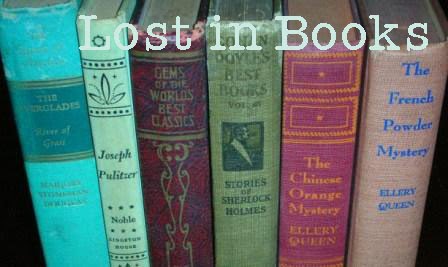
The Minotaur by Barbara Vine (Ruth Rendell)
Protagonist: Kerstin Kvist
Setting: Essex, England
Rating: 5.0
Vine has written a modern gothic novel, complete with its own House of Usher -- Lydstep Old Hall, where Mrs. Cosway lives with her four daughters and a son. Kerstin, originally from Sweden and hoping to find a job near London, comes to live at Lydstep to care for son John, who she is told is schizophrenic. With its old house, covered in Virginia creeper, locked rooms, a mad relative and a highly dysfunctional house, Vine slowly plays out this very gothic tale. There isn't much action in this book, but Vine does keep up the tension. We know something will happen -- to whom and how, we don't know until the end.
This book has reminded me how much I enjoy gothics. Edgar Allen Poe is credited with transforming the genre, bringing us “The Fall of the House of Usher.” But modern gothics -- with their gloomy, foggy atmospheres, families mysteries and even ghosts -- are still being written. Here's a sampling of some (if you know of any others, please let me know!):
The Thirteenth Tale by Diane Setterfield. The narrator, Margaret Lea, is hired by famed author Vida Winter to write her biography. But while she may be famous, nobody really knows Winter – or her many secrets. Lea moves into Winter’s stately Gothic home in the English countryside, and visits the author’s crumbling family mansion, where she feels the ghosts of the past watching her. A tale of twins, ghosts and family madness, this is modern gothic at its best.
Ghostwalk by Rebecca Stott. Writer Lydia Brooke is asked to finish a manuscript on Newton and his ties to alchemy, a book begun by Cambridge historian Elizabeth Vogelsang, who died in mysterious circumstances -– drowned and clutching a glass prism. Brooke moves into Vogelsang’s studio, where pools of light move in strange ways across the walls. Soon, Brooke is convinced that deaths in Newton’s time are somehow linked to current deaths. This has been called an intellectual thriller, but it is undeniably a ghost story as well.
The Sister by Poppy Adams. This is the tale of sisters Ginny and Vivi. After nearly 50 years apart, Vivi returns to the rambling family mansion where Ginny has lived alone. While there are no hauntings or supernatural activity, the novel maintains a taut tension by going back in time to reveal the family’s dynamics, raising questions about central events. The novel also employs another gothic trait, a mentally ill family member, in an interesting way.
Heart-Shaped Box by Joe Hill. Judas Coyne, a rock star, collects strange objects. On an online auction site, he buys a suit that’s advertised as being haunted by the owner’s ghost. It arrives in a heart-shaped box and, soon enough, Coyne is being haunted by a ghost -– as it turns out, the stepfather of a groupie that Coyne slept with. This debut novel by Hill (Stephen King’s son) is a gothic ghost tale with some nice twists.
Duma Key by Stephen King. While King’s fiction usually falls into the horror genre, this book veers more into the gothic, with family secrets, twins (another gothic element), ghosts and other supernatural happenings. In fact, when main character Edgar Freemantle moves to Duma Key in Florida, he makes a reference to his rental house being like the House of Usher (for its creaking sounds). It’s on Duma Key that Freemantle, who owned a construction company and who lost an arm in a horrific crane accident, develops his artistic talent –- except that another hand seems to be guiding his paintings. King goes light on the horror in this book, and the result is a terrific gothic novel.

No comments:
Post a Comment